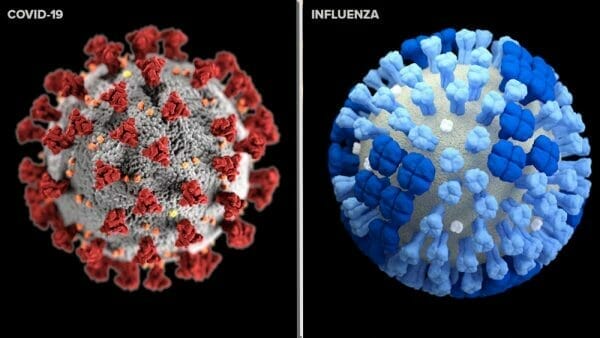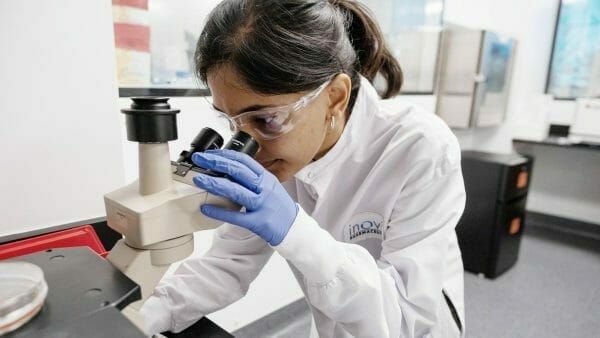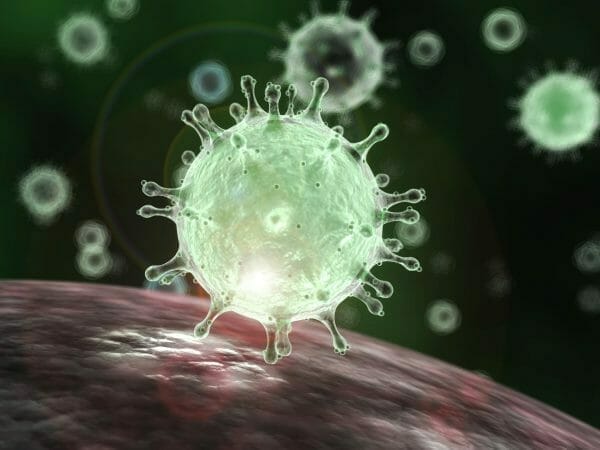Regardless of how you might feel about it, the point remains: the flipside of any disaster is opportunity for those who know how and where to look for it. So if COVID-19 has Donald Trump closing Europe down for American travellers, and Italy closing its borders to everyone, and Israel implementing a mandatory two week quarantine for anyone who even so much as looks at their border, there are companies out there practically frothing at the mouth to turn this catastrophe into cash.
And good for them. If prosocially directed greed keeps our grandparents free and healthy, then we should be all for it.
On that note, Inovio Pharmaceuticals (INO.Q) received a $5 million grant from the Bill and Melinda Gates Foundation to accelerate the testing and scale of their Cellectra 3PSP proprietary smart device for intradermal delivery of INO-4800, a DNA vaccine for COVID-19 today.
The vaccine is in preclinical studies and is expected to move into the first phase of clinical trials in the United States in April with up to $9 million in funding from the Coalition of Epidemic Preparedness (CEPI).
“INOVIO is grateful to the Bill & Melinda Gates Foundation for their continued investment in INOVIO’s DNA medicines platform and for their support for DNA vaccines to potentially protect those at risk globally given the current COVID-19 outbreak. Our team of vaccine experts are working around the clock to advance INO-4800 and we look forward to attracting additional partnerships to expedite its development to meet this urgent global health need,” said Dr. J. Joseph Kim, INOVIO’s president and CEO.
Epidemiologists have recognized that the influenza virus has usually revolved in a cyclical pattern throughout history with global pandemics becoming fewer in number as we approached the modern ear. The last one we had was shortly after the First World War when global conditions after a prolonged filthy trench-war favoured the proliferation of a virus that relies on compromised immune systems. Nowadays, we see those types of conditions only in the developing world. For those of us in cozy developed world Canada (and to a lesser extent, the United States), we can afford to be a bit more sanguine. But not by much.
There’s still a big question left unanswered, and that’s whether or not this is the global pandemic epidemiologists are calling for, or whether this is a lead-up to an even worse pandemic within a year or two when this virus mutates. That’s hard to tell.
But it’s good to know that there are people out there that have been preparing for the eventuality.
For example, development on the Cellectra device started in 2019 with $8.1 million funding from the medical arm of the U.S. Defense Threat Reduction Agency (DTRA)’s medical CBRN Defense Consortium. The new funding will help to accelerate the testing and final completion of the device development and scale up to fight COVID-19. The company’s manufacturing facility in San Diego, California, will build initial quantities and demonstrate the design and scale up of manufacturing processes, which can then be transferred to other contracted manufacturers.
The Cellectra device is designed specifically for a COVID-19 type pandemic scenario. It’s a small, portable, hand-held and user friendly device that runs on double-A batteries. This allows for the device to be stockpiled in quantity without maintenance. The design is based on their current device, which can boast a history of over 6,000 https://e4njohordzs.exactdn.com/wp-content/uploads/2021/10/tnw8sVO3j-2.pngistrations, and has an acceptable safety profile and boasts the CE mark from the European Economic Area. The size and streamlined design also allows it to be produced at reduced cost and at large scale.
It works by using an electrical pulse, which opens small pores at a cellular level to allow plasmids to enter. Once inside, these plasmids use the cell’s own machinery to generate toxins that would force the body into an immune response, and strengthen the immune system of the patient. Administration ensures that the DNA medicine gets right into the body’s cells, where it can influence an immune response, but do not otherwise interfere or change an individual’s DNA.
Inovio’s DNA medicine platform is suited to providing rapid response to emerging viruses with the potential to grow to pandemic levels. The company was the first to advance its DNA vaccine INO-4700 against Middle Eastern Respiratory Syndrome, or MERS-CoV, a related coronavirus, into evaluation in humans. The MERS vaccine is only part-way through clinical trials, and the company is preparing to initiate a large phase 2 vaccine trial for INO-4700 in the middle east where most MERS outbreaks occurred. These efforts have received support from CEPI and included up to $56 million from other collaborators and partners.
Inovio plans to accelerate the testing and scale up of the Cellectra devices to support large scale manufacturing of INO-4800 doses by the end of 2020.
—Joseph Morton



